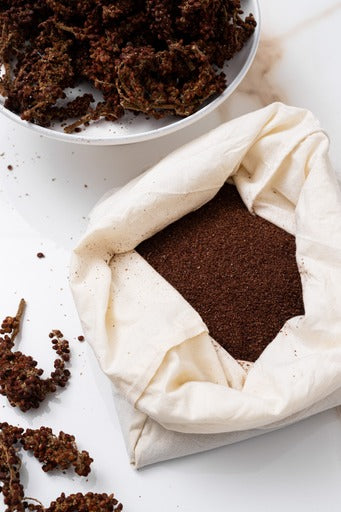The hidden richness of sumac
Sumac, often ignored in western culinary circles, posseses an intriguing cultural depth rooted in centuries past. Join us today as we delve into the cultural significance of sumac and uncover its multifaceted nature.

Sumac in cuisine, a Mediterranean treasure.
Sumac has long been widely used as a spice in many Middle Eastern cuisines. Sumac berries are dried and ground into a reddish powder that adds a tangy, lemony flavor to dishes. Sumac is an essential ingredient in iconic dishes such as fattoush, a refreshing Mediterranean salad, and zaatar, a spice blend.
The increasing popularity of sumac in modern Western cuisine can be attributed to its ability to bring a subtle acidity and unique aroma to dishes. Chefs are exploring new ways to incorporate this spice into dishes ranging from grilled meats to salads to desserts, delicately enhancing them with its lemony notes.

The historical and cultural role of sumac
Sumac has played an essential role in various cultures throughout the centuries.
In Arab culture, it is often associated with generosity and hospitality. Indeed, the red sumac berries are sometimes used as a welcoming offering, symbolizing the openness and warmth of the host towards their guests.

The different types of sumac and their benefits.
While Rhus coriaria is the most common variety of sumac, there are numerous other types of the plant, each possessing its own unique characteristics. Some varieties are native to North America, while others are found exclusively in regions of the Middle East and Asia.
In addition to its culinary appeal, sumac possesses numerous medicinal properties. It has been used for many generations to treat various ailments such as gastrointestinal disorders, infections, and skin problems. Recent studies have highlighted its significant antioxidant content, which helps neutralize free radicals in the body, thereby contributing to strengthening the immune system and preventing premature cell aging. Furthermore, its anti-inflammatory properties make sumac a natural ally in managing inflammatory conditions. Sumac is thus not only a way to enhance your dishes, it is also a perfect health ally.
The sumac culture is diverse and abundant, transcending geographical boundaries and historical eras. Whether utilized in culinary endeavors, medicinal remedy, or cultural symbol, sumac continues to captivate our imagination and bring its unique touch to the global culinary scene. It's time to reacquaint ourselves with this enigmatic plant and delve into its intricate complexities.
